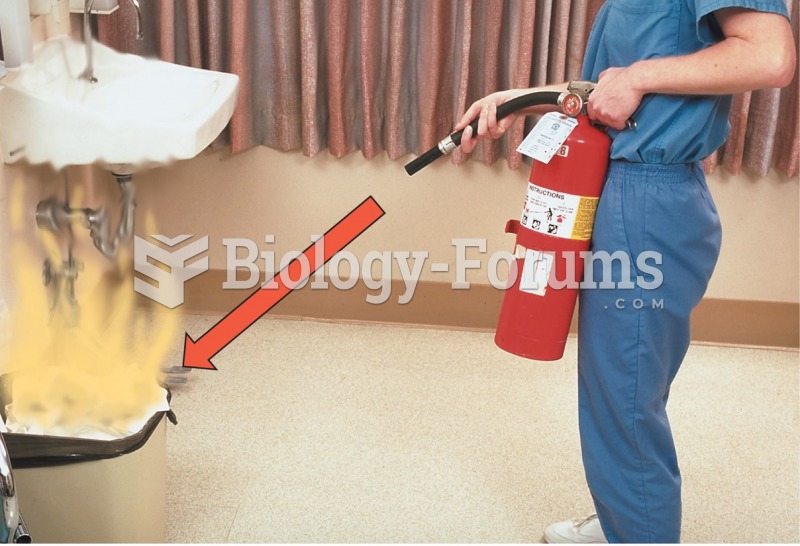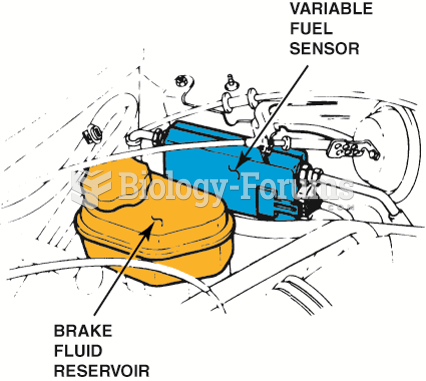|
|
|
There are over 65,000 known species of protozoa. About 10,000 species are parasitic.
Many people have small pouches in their colons that bulge outward through weak spots. Each pouch is called a diverticulum. About 10% of Americans older than age 40 years have diverticulosis, which, when the pouches become infected or inflamed, is called diverticulitis. The main cause of diverticular disease is a low-fiber diet.
By definition, when a medication is administered intravenously, its bioavailability is 100%.
Hyperthyroidism leads to an increased rate of metabolism and affects about 1% of women but only 0.1% of men. For most people, this increased metabolic rate causes the thyroid gland to become enlarged (known as a goiter).
Most childhood vaccines are 90–99% effective in preventing disease. Side effects are rarely serious.
 It is important for new employees to know the location of all fire extinguishers. (B) Aim low toward ...
It is important for new employees to know the location of all fire extinguishers. (B) Aim low toward ...
 The location of the variable fuel sensor can vary, depending on the make and model of vehicle, but ...
The location of the variable fuel sensor can vary, depending on the make and model of vehicle, but ...





